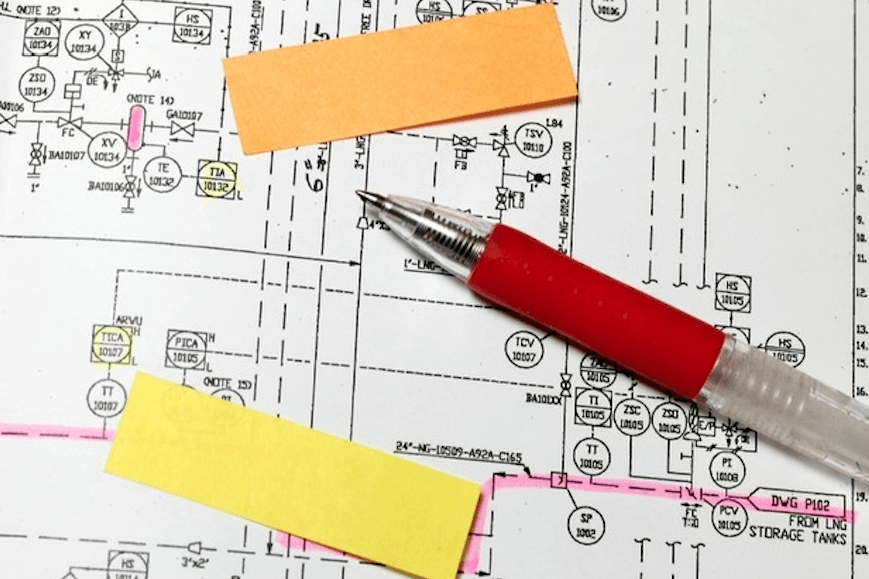TECHNOLOGY FOCUS
Piping and Instrumentation Diagrams commonly referred to as P&ID’s are encountred nowadays throughout all process industries such as Oil & Gas, chemical, pharmaceutical or food industries.
These engineering drawings are used worldwide in design, construction, commissioning, operation and maintenance of industrial plants.
They provide clear information on processes, equipment, control systems and how the plant should handle emergency situations.
As a potential actor in these industries, it is therefore vital that you have a thorough understanding of P&ID’s components and construction.
Piping and Instrumentation Diagrams don’t have to be a complicated, it isn’t rocket science ! This course will make you a P&ID expert and you will know how to read, interpret and successfully understand:
- all of those many lines
- symbols
- process control schemes
- and safety instrumented functions you see in your plant drawings
The knowledge gained in this course will help you to understand all P&ID’s so that you can draw the correct information from them.
This will set you apart from your peers, whether you are an operator, engineer, or manager and will give you an edge over your competitors when seeking employment at one of these industrial facilities.
Moreover since Piping and Instrumentation Diagrams are used in the planning and risk assessment of tasks to identify hazards, process flows and isolation points, then by ensuring that these drawings are properly drawn and understood, you contribute to the safety of your facility, your fellow workers and yourself.


COURSE CONTENT
This training course starts by initiating you to basic blueprint reading (which is also used in electrical, hydraulic and mechanical fields of expertise), then moves on to familiarize you with simple to complex process flow features, such as:
- instrument loops
- advanced process control systems
- safety instrumented functions
- and alarm systems
Symbols are also discussed thoroughly with all the P&ID's standards, conventions and designation codes that apply to them according to the ISA symbology. These include:
- valves (gate, globe, ball, butterfly...)
- actuators (pneumatic, hydraulic, solenoid, single acting spring return, double acting...)
- process equipment (pumps, compressors, heat exchangers, reactors...)
- instrumentation (flow meters, temperature transmitters, pressure gauges...)
- piping and fittings
- lines
- signals (pneumatic, hydraulic, electric...)
The course is designed around a series of real industrial examples of P&ID’s which we work through to a solution. You will be able to practice and become even more proficient with these valuables P&ID examples.
WHO SHOULD ATTEND
- All personnel involved in calculation, design, selection, manufacturing, safety, quality and maintenance of systems and equipment in industrial processes
- Plant Operators
- Process control engineers & technicians
- Instrumentation engineers & technicians
- Design engineers & technicians
- Piping engineers & technicians
- Construction workers such as pipe fitters and plumbers
- Maintenance engineers & technicians
- Mechanics
- People who work with Lockout/Tagout safety systems
- Instructional designers and those involved in writing manuals and operational procedures
- Security, Safety and Environment Officers (SSHE)
- Anyone else with an interest in how P&IDs should be created, maintained and used in assessing emergency situations and regulatory compliance issues

Day 1 first half
- Introduction to P&ID
- Basic blue print reading
- Basic P&ID symbols
- P&ID designation codes
Day 1 second half
- Introduction to Process Control
- Process Control theory
- Basic Process Control Systems (BPCS) in P&ID’s
Day 2 first half
- Advanced Process Control in P&ID’s
Day 2 second half
- Safety Instrumented Systems (SIS) in P&ID’s
- Alarms & Interlock systems in P&ID’s
- Fire and Gas Detection Systems (FGS) in P&ID’s
Day 3 first half
- P&ID’s practice session

